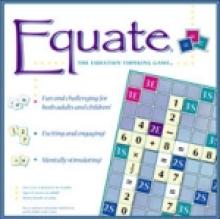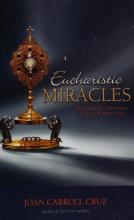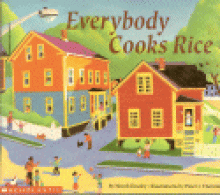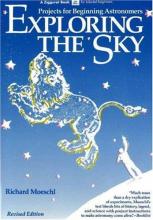No name
Envoy Magazine
1-800-55-ENVOY
Website: http://www.envoymagazine.com
A beautiful full-color glossy magazine on Catholic apologetics. The magazine is trendy in format (meant to appeal to teens and "Generation Xers") but orthodox in content. Although we don't subscribe to this magazine, I've seen a few issues and have been very impressed. Some articles I read included sample scenarios of how to explain Catholic teachings in particular situations. I thought this was a very helpful way of preparing people for apologetics. This magazine also includes Scott Hahn's newsletter Scripture Matters.
Update by webmaster, March 2024: Envoy Magazine has been out of production for several years now. Some of Pat's articles from the magazine can be found at his blog: https://patrickmadrid.com/articles/
For a Catholic apologetics magazine that is still available, check out our review of Catholic Answers Magazine.
Equate: The Equation Thinking Game
Similar in format to the word game Scrabble�, Equate allows players to place equations on a board while gaining points based upon the types of numbers and operations used. (For example, a fraction is worth more points than a whole number and a division symbol is worth more points than an addition symbol. Don't worry - the point value is marked on each tile.) Players may add on to existing equations provided that both sides of the equation are still equal.
We found this to be a fun and challenging game for upper grade school through adult. Add on sets can be purchased for younger grades or for advanced Math (the advanced set also includes negative numbers and exponents). Even with the basic set, level of play can be quite challenging considering equations involving multiplication and division of fractions and order of operation. Rules could easily be adjusted to accomodate players with varying skill levels.
Escape from Warsaw
Eucharistic Miracles
Joan Carroll Cruz has clearly spent years researching these very detailed accounts of 36 Eucharistic Miracles dating from the 8th century all the way up to 1970. Each story is carefully related according to the details known today which often include scientific confirmation and papal recognition of the miracles as well as photographs of reliquaries and hosts that remain intact even today. The stories are fascinating and certainly provide aid to people's faith through these very real testaments to the Real Presence of Christ in the Blessed Sacrament. While these stories are probably written primarily with adults in mind, I was very surprised and delighted when my first-communion aged daughter brought me this book to read to her and repeatedly asked me to read a little to her each night until we had finished the entire book! Highly recommended.
This book can easily be incorporated into a History study as it is organized by date. I have also included references to the stories in this book on my history reading timeline at ReadingYourWayThroughHistory.com
This book may be purchased from any Catholic booksellers that carry TAN Books.
Everybody Cooks Rice
Excellence in Literature: American Literature
Excellence in Literature: British Literature
Exiles of the Cebenna
Exiles of the Cebenna was originally written in the 19th century and pretends to be the long lost journal of a priest from the 3rd century. The language is delightful and the story very moving. It takes place at the time of the persecution by Decius, a particularly brutal time of martyrdom. The people of Arles, France have been told that they must appear at the arena to give sacrifice to the Roman gods. If they refuse, they will be tortured and killed. A small group of Christians under the leadership of the priest telling the story plan an escape through a secret tunnel. The Bishop however, must stay behind.
On the day of his appointed appearance, the Bishop quails under the torture and makes the sacrifice. He is utterly devastated that he could not bear witness to his faith and has failed his people. Hearing of this, his daughter who was one of the escapees, tries to return to see her father and comfort him. Since the tortures, the people and officials are subdued by the horrific spectacle, and the Christians feel that it is now safe to travel in the open. They are recognized however and taken to the prison. The daughter is told that she must sacrifice. She refuses, and in the most moving scene in the book begins her torture. Her life is spared at the last moment, but she does eventually die from her wounds. Her death indeed helps her father to proclaim his faith, and, according to the epilogue, he is also eventually martyred.
Although, a student may have trouble getting into the language of the story at first, it does become more readable and draws the reader in. The ending is worth every word of the rest of the book. It gives a truly inspiring image of the trials and glory of the martyrs.
Recommended for 7th grade and up.
Exploring the Sky
As your student begins to look skyward and ask questions, take them in one hand and this book in the other! With this book, an assortment of ordinary household things, binoculars or a telescope, and lots of time you can teach a fascinating, hands-on course in beginning astronomy for an entire year. Exploring the Sky is not a textbook. It isn't a storybook. It IS a living book guide to exploring the heavens with an interesting mix of history, biography, folklore, legend, science facts and science fiction, and even some mathematics and art. Obviously written by someone who loves the subject, Exploring the Sky makes the subject come alive.
Introducing a broad range of subjects, this book is organized into seven lengthy chapters with four topical sections each, and a total of seventy-two projects. This is hands-on, time-consuming, attention-grabbing, messy science, not read-about-it science! These sections begin with background information on the topic and at least one project, although most sections include several projects. For example, Chapter 5 is titled "Sky-Gathering Tools". Section 3 is titled "Cameras" and includes presentations on photography with a project on photographing stars and planets, the photoelectric effect, and computers with a project on showing how images are transmitted. This is followed by "Observations", critical thinking questions designed to elicit connections from the student. Often, there are suggestions for additional books to read and browse on the topic as well. Many of the suggested books have copyright dates between 1960 and 1980 and would be best located at the library. It is possible to simply dive in, choose a chapter or a section of a chapter, and begin exploring. The toughest decision is where to begin! How difficult it is to choose among constructing a sundial, demonstrating how the colors of the sky are make, experimenting with prisms, making a model of a black hole, or creating craters on Mercury.
As with all secular books on astronomy, there are references to millions of years of time, but there is no particular emphasis on evolution. Creation legends are retold from cultures as diverse as those of Babylonia, the Norsemen, Mexico, the Maori, and Greece but there is no mention of Christian teaching. Catholic children at this age level shouldn't have trouble making essential distinctions and will probably find value in contrasting this section with the book of Genesis and other sources of Catholic teaching.
This book is noted on the cover as being for "talented beginners", but it is for beginning astronomers who are middle-school-aged students and above, not beginning students in the elementary grades. Basic skill with multiplication and division, as well as the ability to use reference tables that are provided in the book, is necessary to understand some of the projects. Although there are numerous diagrams and sketches, the only thing missing is color photographs. I'm guessing that printing in black and white contributes to keeping such a valuable book so inexpensive. Thus, the only supplements that I suggest are Internet photographs (such as those on the NASA site) or books in Seymour Simon's space series.








